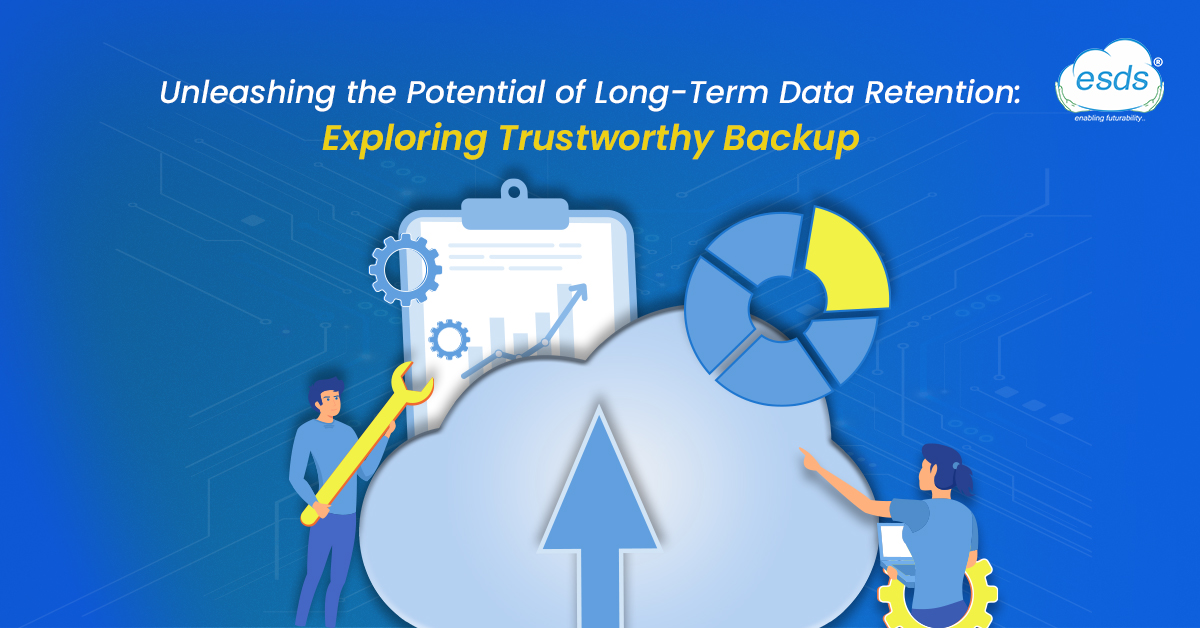Unleashing the Potential of Long-Term Data Retention: Exploring Trustworthy Backup

In today’s digital age, data has become the lifeblood of organizations, fuelling critical operations, strategic decision-making, and customer experiences. However, as the volume of data continues to explode exponentially, ensuring its long-term retention and availability has emerged as a pressing concern. Organizations need robust backup solutions that not only safeguard their valuable data from loss or corruption but also provide a scalable and efficient approach to managing data retention over extended periods. In this blog, we will explore the challenges associated with long-term data retention and delve into the various backup solutions that can help organizations tackle this complex task with confidence and peace of mind.
As a critical matter, data retention policies are complicated and may have consequences for long-term implementation. While considering building a data retention policy, priority must be given to the reasons why the data is being archived in the first place. Once the reasons are established, it helps in creating an efficient system for locating the crucial data by freeing up space and also employing backup practices.
What are the choices available? Usually, businesses choose a data back up archiving their data. While the terms “backup” and “archive” are often used interchangeably, they have distinct meanings and purposes. Contrary to common belief, backup and archival solutions are not identical. While both methods serve the purpose of protecting business data, they exhibit several distinctions that depend on the specific requirements of each organization. Let’s delve into understanding the policy for data retention.
So, what is a backup retention policy?
A backup retention policy refers to a set of guidelines and rules established by an organization to determine how long backup data should be retained and under what conditions it should be deleted or archived. The policy outlines the specific duration for which backups should be kept, taking into account factors such as regulatory requirements, business needs, data integrity, and recovery objectives. The backup retention policy helps ensure that organizations retain data for an appropriate duration to meet operational and compliance requirements while also optimizing storage resources and minimizing costs.
Retention policies serve various purposes and are primarily designed to ensure the security and accessibility of customer or client data. In terms of retention policies, various sectors like education, healthcare, IT, etc. have a requirement as per their industry. These policies define the specific rules and guidelines for storing data and may include provisions for the deletion of certain data after a specified period. Ultimately, retention policies play a crucial role in safeguarding sensitive information while adhering to industry-specific regulations and compliance standards.
Now let’s understand What Data should be retained and why?

Determining what data to retain involves considering legal requirements and internal policies. Certain data is mandated by law to be retained for a specific period, while other data may be optional to keep but not necessarily required by a retention policy. Organizations can establish their own rules regarding data retention, as long as they comply with applicable regulations. Commonly retained data includes files, email messages, and database records.
To establish effective backup retention practices, organizations should start by defining which data should remain live and which data should be archived. While data age is often a determining factor, other criteria may also come into play. Administrators might consider factors such as the last access date of the data and its type. This evaluation helps prioritize data for retention based on its relevance and potential future use.
Implementing a backup retention policy should also involve regular reviews and updates. As data requirements and business needs evolve, it is essential to periodically reassess the retention policy and make necessary adjustments. Organizations should stay informed about changes in compliance regulations and industry best practices to ensure their backup retention policy remains up-to-date and aligned with current requirements. This ongoing evaluation and adaptation of the retention policy enable organizations to maintain an efficient and compliant data management strategy.
Creating an effective backup retention policy and scheduling checklist requires attention to specific details that may differ among organizations. However, the following checklist provides a foundation for establishing a robust backup retention plan. Administrators can follow these steps:
- Data Definition: Clearly define the types of data to be included in the backup retention policy.
- Lifecycle Organization: Categorize the data based on its lifecycle, including factors such as importance, sensitivity, and regulatory requirements.
- Version Control: Determine the number of versions of each dataset that should be stored, considering factors like recovery needs, storage capacity, and historical reference.
- Backup Type and Frequency: Specify the backup methods and frequency suitable for each dataset, taking into account the criticality and volatility of the data.
- Lifecycle Policy Creation: Develop a comprehensive policy for each dataset, outlining retention periods, archiving guidelines, and any specific conditions or exceptions.
- File Deletion and Purging: Regularly review and remove unnecessary files that have exceeded their defined retention periods or are no longer required for business or compliance purposes.
- Review and Execution: Periodically assess and validate the backup retention policy to ensure its effectiveness, compliance with regulations, and alignment with evolving business needs.
In conclusion, while data is undoubtedly vital for any business, adopting a data retention policy is crucial to strike the right balance between preserving resources and managing risk effectively. By embracing a data retention policy, businesses can streamline their operations, safeguard sensitive information, and position themselves for long-term success.
- Unlocking Data’s Time Machine: The Importance of Database Point-in-Time Recovery - August 2, 2023
- Future-Proof You’re Data: Navigating the World of Enterprise Backup and Data Protection Solutions - July 7, 2023
- Unleashing the Potential of Long-Term Data Retention: Exploring Trustworthy Backup - May 31, 2023
